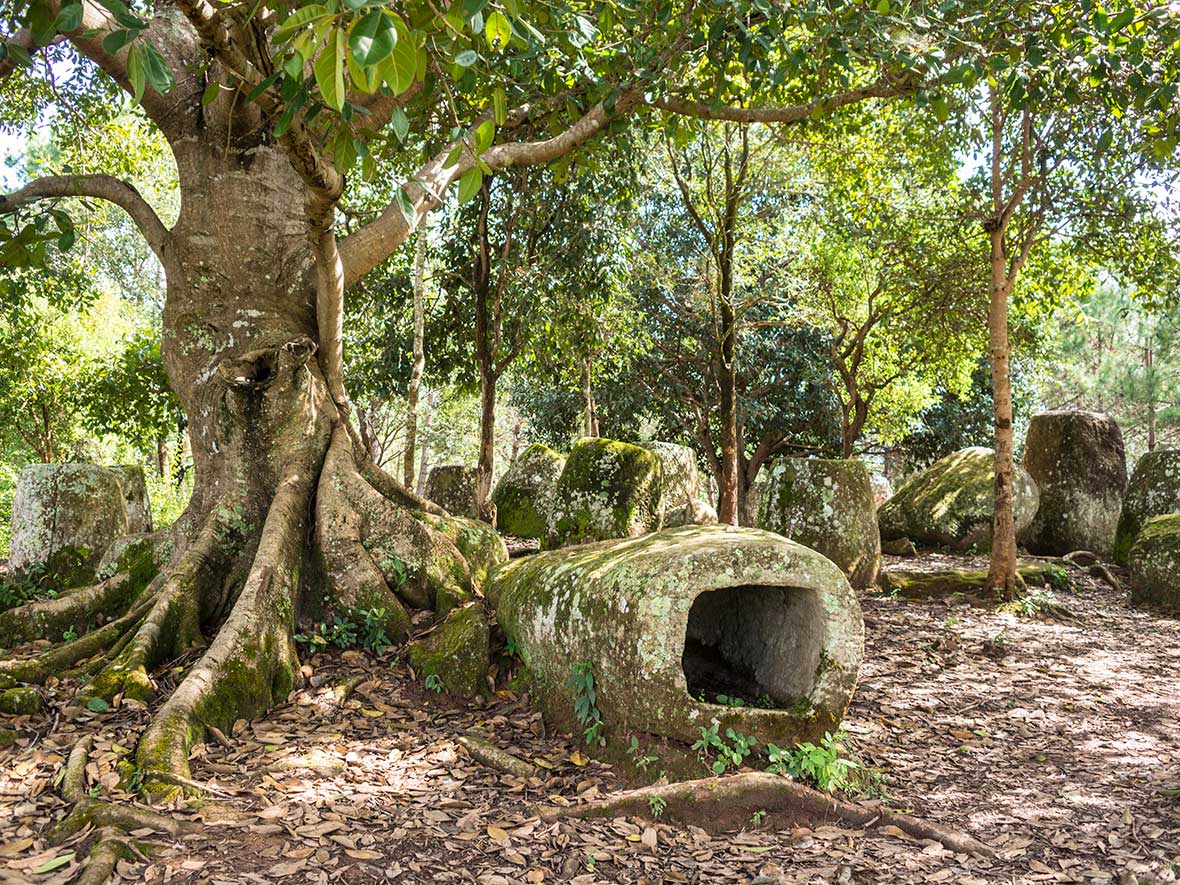
After decades of effort, it was finally announced in 2019 that the Plain of Jars would become a UNESCO World Heritage Site, and this year we know a little more about how old this popular attraction actually is.
The Plain of Jars is famed for the more than 2,100 stone jars thought to have been part of ancient funerary practices. An important archeological site as well as a popular off-the-beaten track Laos travelers and Instagram-happy tourists, officially the Megalithic Jar Sites.

It was previously thought that the site of human remains and artifacts dated as far back as 500 BCE, but this site has been one of the great puzzles of Southeast Asian archeology. Now, according to a recent study, some of the megaliths are thought to have been much older than previously thought — perhaps by as much as a thousand years.
“Northern Laos is home to one of Southeast Asia’s most enigmatic archaeological cultures,” the study states, claiming that some of the areas were positioned potentially as early as the late second millennium BCE. “While brought to the attention of Western scholars in the late 1800s, it was not until the pioneering expeditions by Madeleine Colani (1866–1943), of the École française d’Extrême-Orient (EFEO), that significant research on the megalithic sites commenced.”
Since then, the Plain of Jars has become a popular (albeit hard to reach) destination for travelers to Northern Laos.

But even after their popularization, study of the Plain of Jars has been complicated, both by the history of the region and the presence of unexploded ordnance (UXO) left over from America’s war in Vietnam.
“Of the more than 100 identified jar sites, less than 10% have been cleared and are accessible for ‘traditional’ archaeological investigation,” the study states.
Found on the Xieng Khouang Plateau, some of the megaliths of the Plain of Jars weigh around six tons, and up to three meters in diameter, some still with their lids attached. Whether they are the remnants of a trade route or burial pit, the Plain of Jars’ most famous area is Site 1, of the 90 known sites in Phovosan. Seven jar sites are clear of unexploded ordnance left from America’s war with Vietnam. Between 1964 and 1973, American planes carpet bombed Xieng Khuang province, where the Plain of Jars is located, due to its close proximity to the North Vietnamese border.

Using Optically Stimulated Luminescence (OSL) to date the ancient stone, the study excavated selected areas at three jar sites and broader surveys of the region, increasing overall knowledge of the sites and their ritual significance. Mortuary practices at some of the sites – including human skeletons and bundled or jarred collections of bones – was also dated by radiocarbon dating, suggesting activity between 9-13th century CE.
“Although the original purpose of the megalithic jars remains to be determined, the present research indicates a long history of activity at the sites. The evidence provided by OSL dating has provided the first ever dates for the original placement of the jars at Site 2–1240 BC to 660 BC,” the study concludes.

“The data presented here strongly suggests that the placement of the megaliths preceded the mortuary activity around the jars, indicating re-use of the sites and enduring ritual significance,” the study states.
To this day, Laotians die every year as a result of UXO and studying the remote Plain of Jars remains difficult, and much study is left for the remaining 90 percent of the Plain of Jars.
The Plain of Jars is Laos’ third World Heritage Site, following Vat Phou and Champasak and the now booming tourist city of Luang Prabang.

